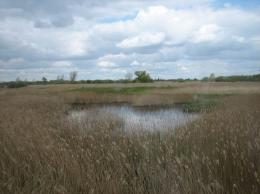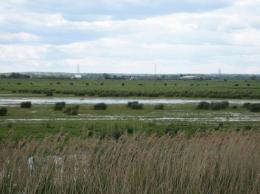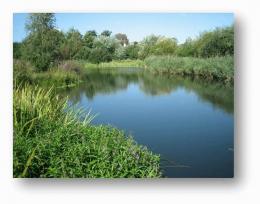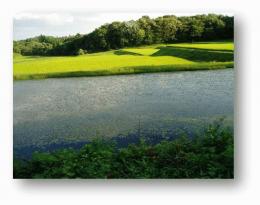Green Infrastructure for Future Generations
- Izumi Washitani
- Professor, Agricultural and Life Sciences at the Department of Ecosystem Studies, Graduate School of Agricultural and Life Sciences, The University of Tokyo
Recently, the European Commission has adopted strategies in order to proactively utilize “Green Infrastructure.” Green Infrastructure is an EU-wide approach aiming at securing ecological, economical and social gains as far as possible, based upon a sufficient understanding of and a high respect for natural processes. For example, wetlands that efficiently absorb water brought by heavy rainfall like sponges are utilized for preventing floods instead of constructing dams or dikes. Wetlands not only make a great contribution to the sustainability of biodiversity through absorbing carbon dioxide, but also purify water quality and provide several recreational opportunities like bird watching in green areas. Also, wetlands are highly profitable although the economic and environmental costs are small. Since it is totally cost-effective, we should choose the Green Infrastructure method when the choice is assured based on a “sense of rationality.”
According to the new strategies (including the Aichi Targets to be achieved by 2020) developed at the 10th meeting of the Conference of the Parties to the Convention on Biological Diversity (CBD/COP10) held in Japan in October 2010, the European Union published new “Biodiversity Strategies” in May 2011. In line with a suggestion by the Japanese Government, “a world of living in harmony with nature” was set as the long-term vision to be achieved by 2050 in the new world strategies adopted at COP10. However, the European Union has a more concrete vision: “A long-term vision that by 2050 European Union biodiversity and the ecosystem services it provides – its natural capital – are protected, valued and restored for biodiversity's intrinsic value and for their essential contribution to human wellbeing and economic prosperity, and so that catastrophic changes caused by the loss of biodiversity are avoided.”
Green Infrastructure is situated as a measure contributing to this long-term vision. Green Infrastructure not only contributes to the conservation of biodiversity through securing a sound ecosystem where connectivity (a sound method of ecosystem interactions or interspecific relationships among living things in landscapes divided by developments) is assured, but also provides benefits to regional societies through ecosystem services such as the purification of water, sustaining of highly productive soil, or high quality recreational opportunities.
In the EU strategies involving Green Infrastructure, the importance of natural environment for wealthy and healthy human life is highlighted. As a whole, this shows the EU’s great concern in conserving and recovering the ecosystem function. Green Infrastructure which encourages sound ecosystem functions is quite inexpensive compared to other methods from the aspects of consolidation and maintenance, and at the same time, it is quite profitable as mentioned above. This is very attractive for society. As the greater part of the costs being invested is labor costs for research, monitoring or management, this is effective for long term job creation, and therefore, greatly profitable for regions.
Green Infrastructure is a social infrastructural method conceptualized in the United States in the mid-1990s. It is a planning method which optimizes the natural environment in land use. It is characterized by laying emphasis on the ecosystem network enhancing the “life-sustaining” function. By the 1990s, North America had already changed direction, and the age of large-scale dam construction ended. In addition to nature restoration projects for rivers or large wetlands pursued before the 1990s, various Green Infrastructure projects have been conducted.
Come to think of it, infrastructure in Japan after the Great East Japan Earthquake is being dealt with in the opposite direction from such international trends. The construction plan of Yamba Dam, which was almost cancelled, was revived in the river development planning of the Tone River watershed. Where can we find the reasons causing such an anachronistic situation from an international point of view? Probably, social literacy, including decision makers, about the natural environment such as biodiversity or ecosystem is at a very low level. However, traditional “green infrastructure” based on traditional wisdom was rather common in Japan. Land use found in satochi satoyama is an exemplary green infrastructure.
In satoyama, there were not only agricultural lands but also plenty of spaces like forests, grasslands, wetlands, or waterfronts to secure biological resources such as building materials, feeds, or fertilizers. Reed or amur silver-grass beds, utilized as source places for biological resources like thatches, played the role of a buffer zone, preserving villages and agricultural lands from natural disasters.
Tidal flats developed along a river mouth according to its land form, providing diverse ecosystem services through nurturing natural blessings including fish and shells and purifying water quality. However, such places were developed into places for intensive human activities like urban areas, and the possibilities for natural disasters increased, accordingly.
If we can use green infrastructure spaces as places for enjoying diverse ecosystem services such as source places of naturally grown biomass resources, recreations blessed by vast landscapes or rich biodiversity, or optimization of water purifying function, “disasters” which may cause losses in human life or wealth, or cause a great hindrance to human activities, would not eventuate, even if we were hit by storms, floods or tsunami.
I already mentioned that the social burden cost for Green Infrastructure securing a “buffer zone” is smaller than that of “gray infrastructure” taking countermeasures by constructing artificial solid structures. Regarding the costs, it is especially important to estimate the environmental cost which does not produce adverse effects on ecosystem functions. Also, it is necessary to include the benefits which bring the potential of providing diverse ecosystem services. If the costs and benefits are appropriately estimated, the method of disaster prevention/reduction by efficiently securing natural lands as buffer zones is shown to be the most efficient and effective way from a long-term perspective. This idea is repeatedly raised in international environmental evaluation documents such as the Millennium Ecosystem Assessment report or evaluation documents related to the Convention on Biological Diversity.
The conservation and restoration effects of biodiversity can be expected through the restoration of wetlands such as tidal flats, reeds or amur silver-grass beds where perennial plants belonging to the rice family are expected as biomass energy material, and are dominant. In addition, it is possible to sustain the supply potential of maintenance-free and diverse ecosystem services. The restoration of wetlands also revives sustainably usable ecosystems when necessary. This idea is mentioned in detail in my book entitled “Shinsai-go no shizen to do tsukiauka (in Japanese, How We Should Face Nature After the Great East Japan Earthquake) (Iwanami Shoten).”
Also in Japan, it is desirable to break away from the exclusive devotion to gray infrastructure, learn from traditional green infrastructure like satoyama, and develop new green infrastructure conforming to Japanese natural and social conditions.
Photo 1 Large-scale green infrastructure restoration project, Great Fen Project, UK
Landscape consisting of a mosaic of diverse ecosystems
Photo 2 Large-scale green infrastructure restoration project, Great Fen Project, UK
Cows close to original species are utilized in the management based on scientific research
Photo 3 Waterfront of satoyama
Photo 4 Reservoir for Nature Restoration Project in Kubogawa Ihatove
Profile of Izumi Washitani
Prof. Izumi Washitani was born in 1950. In 1972, she completed a Bachelor’s degree in Science at the Department of Biology, Faculty of Science, The University of Tokyo, and obtained her Ph.D. at the Graduate School, The University of Tokyo in 1978. She served as Lecturer of Biological Science, Tsukuba University (1986-1992), and Associate Professor of Biological Science, Tsukuba University (1992-2000). Since 2000, she has served as Professor of Agricultural and Life Sciences at the Department of Ecosystem Studies, Graduate School of Agricultural and Life Sciences, The University of Tokyo. Also, she is a Member of the Central Environment Council, Science Council of Japan.
In 1997, she was awarded an Encouragement Prize at the 5th EXPO ’90 Prize, The Konosuke Matsushita Memorial Foundation, Japan. She won the Award for Environmental Conservation given by the Minister of the Environment, Japan in 2008, and The MIDORI Academic Prize, Cabinet Office, Government of Japan in 2013.
Prof. Washitani specializes in ecology and conservation ecology. Now she is engaged in a wide range of studies related to biodiversity and nature restoration.
Her major publications include:
“Hozen Seitaigaku Nyumon (in Japanese, Introduction to Conservation Ecology)” (Bun-ichi Sougou Shuppan); “Shizen-saisei, Jizokukanou na Seitaikei no tameni (in Japanese, Restoration of Nature – toward the Sustainable Ecosystem)” (Chuko Shinsho); “Ten to Chi to Hito no aidade (in Japanese, Among Heaven, Earth and Humans)” (Iwanami Shoten); “Seibutsu Hozen no Seitaigaku (in Japanese, Ecology for Biological Conservation)” (Kyoritsu Shuppan); “Seitaikei wo Yomigaeraseru (in Japanese, Revive the Ecosystem)” (NHK Shuppan); “Kounotori no Okurimono (in Japanese, Gifts of Storks)” (Chijin Shokan); “E de wakaru Seitaikei no Shikumi (in Japanese, Ecosystem by Illustrations)” (Kodansha); “Nippon Shizen Saisei Kikou (in Japanese, A Book of the Restoration of Nature in Japan)” (Iwanami Shoten); “Chikyu-kankyo to Hozen-seibutsugaku (in Japanese, Global Environment and Conservation Biology)” (Iwanami Shoten); “Iwanami Booklet, <Seibutsu-tayousei> Nyumon (in Japanese, Iwanami Booklet Series, Introduction to <Biodiversity>)” (Iwanami Shoten); “Seiyou-maruhanabachi wo Oe –Gairai-seibutsu towa Nanika (in Japanese, Chase to the buff-tailed bumblebee, - What alien species is -)” (Doshinsha); Iwanami Junior Shinsho “Satoyama – Seibutsu-tayousei to Seitaikei-moyo (in Japanese, Satoyama – Biodiversity and Ecosystem Patterns) (Iwanami Shoten); “Shinsai-go no shizen to do tsukiauka (in Japanese, How We Should Face Nature after the Great East Japan Earthquake) (Iwanami Shoten).”














